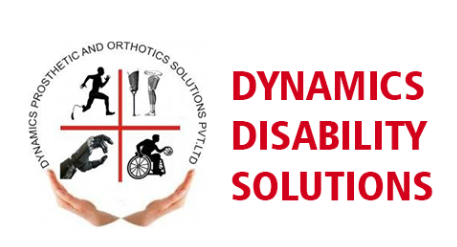






Lower-limb bracing is a great option for individuals requiring lower-limb mobility assistance, functional support, anatomical correction, and/or injury prevention. The design of your lower-limb brace will depend upon your anatomy, medical condition, current activity level and future functional goals. Lower limb bracing can be custom or off-the-shelf. Custom braces are often necessary for patients requiring specific anatomical modifications or functional customization. Dynamics Disability Solutions is proud to be the leading provider of custom and off-the-shelf lower limb bracing in the Northeast. Scroll down to explore the most common lower limb bracing designs and to schedule a free evaluation with us today.
The design of your lower-brace and the process to receive it will depend upon several factors, including:
What are your medical conditions that require the use of a brace?
Are you a new or experienced brace wearer?
What is your current activity level and future functional goals?
Do you require an off-the-shelf or custom brace?
These are just a few of the questions that will dictate the timeline and process for receiving your brace. In general though, our orthotists will conduct a thorough evaluation to determine the ideal brace for you and administer a comprehensive fitting to ensure brace fit, comfort, and efficacy.
The orthotic team at Dynamics Disability Solutions is proud to be the leading provider of pediatrics bracing in the Northeast. Please contact us with any questions or to schedule a free consultation today.
Patients may require foot orthotics for a variety of reasons. Foot orthotic design will depend upon each patient’s condition, anatomy, and functional goals. Dynamics Disability Solutions will work with you and your team to ensure you receive foot orthotics that maximize your performance and minimize your pain and risk of injury. Foot orthotics are designed to achieve one or more of the following goals:
Enhance performance
Prevent injury
Facilitate recovery from injury

An SMO (Supramalleolar Orthosis) supports the foot just above the ankle bone or malleolus. SMOs are prescribed for patients who have soft, flexible, flat feet (pes planovalgus). They are mostly worn by children. The SMO is designed to maintain a vertical, or neutral, heel while also supporting the arches of the foot. The SMO can help improve standing balance and walking.

Ankle-foot orthoses (AFOs) are among the most commonly prescribed lower limb orthoses. They are custom made for each individual to encompass the foot, ankle and leg, finishing just below the knee. Made from high temperature thermoplastic AFOs are supplied to combat a variety of factors, these may include muscle weakness, joint instability and high muscle tone.
Fitted with a variety of purposes in mind including controlling alignment, increasing mobility and independence, assisting rehabilitation and/or to reduce pain, AFOs are also provided with the intention of preventing deformity occurring. Depending on a child’s needs they may be hinged (made to bend at the ankle) or solid (no movement at the ankle) and fitted on either one or both legs. This information sheet aims to inform parents and carers what AFOs are, what they do, what to expect in a casting, fitting and review appointments and how to care for both the child and the AFO.

A Knee Ankle Foot Orthosis or KAFO is a lower extremity orthotic that is used to control instabilities in the knee and lower limb by maintaining proper alignment and controlling motion.
Instabilities can be caused by broken bones, arthritic joints, hyperextension of the knee, muscle weakness and/or paralysis. As there are many different reasons that a person may need to utilize a KAFO, there are many different designs for a KAFO based on necessity. Additionally, a KAFO is considered a part of pelvic stabilization known as HKAFO (hip-knee-ankle-foot orthosis), which has further design types like RGO (reciprocal gait orthosis).
A KAFO may be made with leather components or with plastic components. It also has a variety of knee joints (from drop locks to no locks) that is determined by a person’s condition.

The term HKAFO is an acronym that stands for hip-knee-ankle-foot-orthosis and describes the part of the body that this device encompasses. This device is basically a KAFO with the addition of a hip joint and pelvic section.The addition of the hip joint and pelvic section provides control to selected hip motions. These selected motions about the hip are front to back, side to side, and rotation. One reason the hip section is added to a KAFO is to reduce or minimize the risk of the hip moving out of proper position or dislocating. Another common reason is to stabilize the hip and lower spine in cases where the patient is weak or paralyzed. One common application of HKAFO is a reciprocal gait orthosis, or RGO, which helps move one hip upon moving the other hip and encouraging a normal gait.
